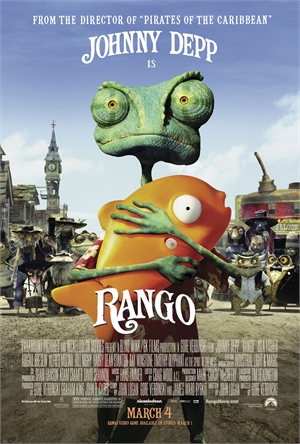Paramount Centennial
Paramount Pictures’ 100 years has reflected the growth of Hollywood
As Paramount celebrates its 100th Anniversary, its story parallels the history of the film industry in Hollywood. The arrival of Jessy Lasky’s film production company changed the sleepy village and its acquisition by Paramount in 1916 sealed the town’s fate for generations to come. This year the studio remains the largest movie studio within the boundaries of Hollywood. The studio’s property consists of a 56-acre main lot plus six acres of ancillary lots. There is no doubt that Hollywood and Paramount are synonymous evolving and growing the meet the needs of the industry it serves.
Paramount’s lineage dates back to 1912, when Adolph Zukor, the owner of a New York nickelodeon, secured American distribution rights to Sarah Bernhardt’s four-reel film, QUEEN ELIZABETH. The film’s triumphant opening on July 12, 1912, as the first full-length drama shown in the United States prompted Zukor to found the Famous Players Film Company. Famous Players began to produce movies in New York, beginning with THE PRISONER OF ZENDA and THE COUNT OF MONTE CRISTO. A year later, Zukor invested in a film distribution company named Paramount Pictures. The groundbreaking four-reel feature in a time when two reels was the norm propelled Zukor’s Famous Players Film Company to great heights, and in the process, transformed the business of entertainment forever. This would be the gateway to Zukor’s future, Paramount Pictures, a company he would run for 64 years. Inspired by Zukor’s success, Jesse L. Lasky soon teamed with first time director Cecil B. DeMille to make a film version of the successful stage play The Squaw Man. It was the first feature-length film actually made in Hollywood, and marked the debut of the Jesse L. Lasky Feature Play Company.

Inspired by Zukor’s success, Jesse L. Lasky teamed with first time director Cecil B. DeMille to make a film version of the successful stage play, The Squaw Man. The plan was to shoot the feature film in New Jersey near the new company’s headquarters, but it was winter and not the ideal setting for a Western saga. DeMille, who was looking for an adventure, persuaded Lasky to let him take production to Flagstaff, Arizona, but when they arrived, it was snowing. DeMille continued on to California and rented a barn on Vine Street near Sunset (it still exists today as the Hollywood Heritage Museum). On December 29, 1913, shooting began on the first full-length feature film made in Hollywood and marked the debut of the Jesse L. Lasky Feature Play Company.
June 28, 1916, Paramount’s history was changed forever. The Jesse L. Lasky Company, which was producing films in Hollywood, merged with Famous Players to form the Famous Players-Lasky Corporation. The corporation consolidated its production and distribution divisions, and audiences began seeing the iconic “Paramount Pictures” label.
It wasn’t long before the new entertainment medium created unprecedented notoriety. In 1921 Rudolph Valentino claimed his place as one of cinema’s most iconic heartthrobs in the silent film The Sheik. At the time, The Sheik was deemed amoral, but the throngs of female admirers swooning over Valentino quickly overshadowed the criticism and his untimely death from appendicitis earned him a place in film history.
Cecil B. DeMille made The Ten Commandments twice, first in 1923 (silent B/W) and then in 1956. The latter version was his biggest, most star-studded, and final film. DeMille never skimped on spectacle, and the movie’s parting of the Red Sea was the centerpiece that clinched the Academy Award® for Best Visual Effects.
With the merger of the Jesse L. Lasky Company and Famous Players, Lasky supervised the construction of a new Hollywood studio on a 26-acre lot. Located on Marathon Street, the original buildings contained four large sound stages and cost $1 million.
WINGS the Studio’s 1927 release with groundbreaking aerial footage, received the very first Academy Award® for Best Picture from the members of the Academy of Motion Picture Arts and Sciences.
A silent movie about World War I fighter pilots, WINGS starred Clara Bow, Charles ‘Buddy’ Rogers and Richard Arlen, with Gary Cooper in a scene which helped launch his star in Hollywood. In addition to it receiving the first Best Picture Oscar, WINGS has the distinction of being only silent film in movie history to win in the Best Picture category. (This would stand until “The Artist” received an Oscar this year.)
In the mid-thirties as the American economy was coming out of the Great Depression, Paramount sustained its business with memorable Bing Crosby musicals, Cecil DeMille spectacles and the outrageous comedies of Mae West.
Despite the conflicts of World War II, the forties brought Hollywood unprecedented prosperity. Paramount concentrated on films of the escapist variety, and prospered to the tune of over $13 million in profit – and in 1946, crested to a stratospheric $39 million, easily the biggest profit ever registered by any film company.
2748.jpg)
In addition to its commercial success, the forties proved to be a time of critical acclaim for Paramount films. In 1944, Paramount won its second Best Picture Academy Award® for Leo McCarey’s GOING MY WAY. The very next year, Billy Wilder’s THE LOST WEEKEND took the top prize.
From 1949 to 1956, Paramount Pictures crowded the Academy Award® nominee lists with enduring classics including, THE HEIRESS, SUNSET BOULEVARD, A PLACE IN THE SUN, THE GREATEST SHOW ON EARTH (1952 Academy Winner), ROMAN HOLIDAY, SHANE, THE COUNTRY GIRL, THE ROSE TATTOO and DeMille’s remake of THE TEN COMMANDMENTS.
Gulf+Western Industries, Inc. acquired control of Paramount on March 24, 1966. The corporation turned its interest toward the new entertainment division, and on June 5, 1989, G+W was renamed Paramount Communications, Inc.
During those years, Paramount created some of the most iconic movies in American cinematic history including ROMEO AND JULIET (1968), which won two Academy Awards®; TRUE GRIT (1969), which starred the legendary John Wayne; THE GODFATHER (1972), which won three Academy Awards and is considered the film that elevated the gangster drama genre; and CHINATOWN (1974), which was directed by Roman Polanski and starred some of Hollywood’s most celebrated talents, Jack Nicholson, Faye Dunaway and John Huston.
1980’s: THE BIRTH OF FRANCHISES – The eighties gave rise to some of the nation’s most memorable films – many of which went on to become enduring franchises.
STAR TREK (1979, 1982, 1984, 1986,1989)
AIRPLANE! (1980, 1982)
FRIDAY THE 13TH (1980, 1981, 1982, 1984, 1985, 1986, 1988, 1989)
RAIDERS OF THE LOST ARK / INDIANA JONES (1981, 1984)
BEVERLY HILLS COPS (1984, 1987)

Paramount also was recognized for its poignant dramas including ORDINARY PEOPLE (1980), which went on to win three Academy Awards and TERMS OF ENDEARMENT (1983), the most celebrated film of the year winning five Academy honors including Best Picture.
In 1986, Paramount captured a 22% share of the domestic box-office revenue, twice that of its closest competitor. In addition, the studio had five of the year’s ten top-grossing films: TOP GUN, CROCODILE DUNDEE, STAR TREK IV: THE VOYAGE HOME, THE GOLDEN CHILD and FERRIS BUELLER’S DAY OFF.
On June 5, 1989, G+W was officially renamed Paramount Communications, Inc.
In 1994, Paramount merged with Viacom Inc. under the leadership ofSumner Redstone, Executive Chairman of the Board and Founder. In January 2006, Viacom split into two separate publicly-traded companies: CBS Corporation and Viacom. The Paramount Motion Picture Group is part of Viacom which also includes MTV Networks, BET Networks, and Famous Music.

In the late 1980s and early 1990s, the annexation of Marathon Avenue and expansion of Paramount adding the Gene Roddenbery, Marathon Buildings and the 516 seat theatre created a new site for special events adjacent to the famous gates. With the acquisition of several adjacent parcels the lot is 56 acres. Paramount Pictures’ Post Production Building was completed in 2011. It houses a new Technicolor, state-of-the-art post production sound editing facility, and is LEED CI Certified. Almost a “city within a city,” The studio continues to research and develop energy reduction solutions including the introduction of a multi-phase networked central chiller plant to provide chilled water to stages and office buildings for air conditioning.
Continually evolving to meet the needs of the industry that it serves, plans have begun for The Hollywood Project, a 25-year vision for the future of the studio tht enhances studio operations, invests in new state-of-the-art soundstages and high-tech production facilities, creates entertainment jobs in Hollywood and preservrds the studio’s history. It provides Paramount its first opportunity to take a cohesive look at the entire studio lot to improve synergy and efficiencies that are critical to preparing for the future.